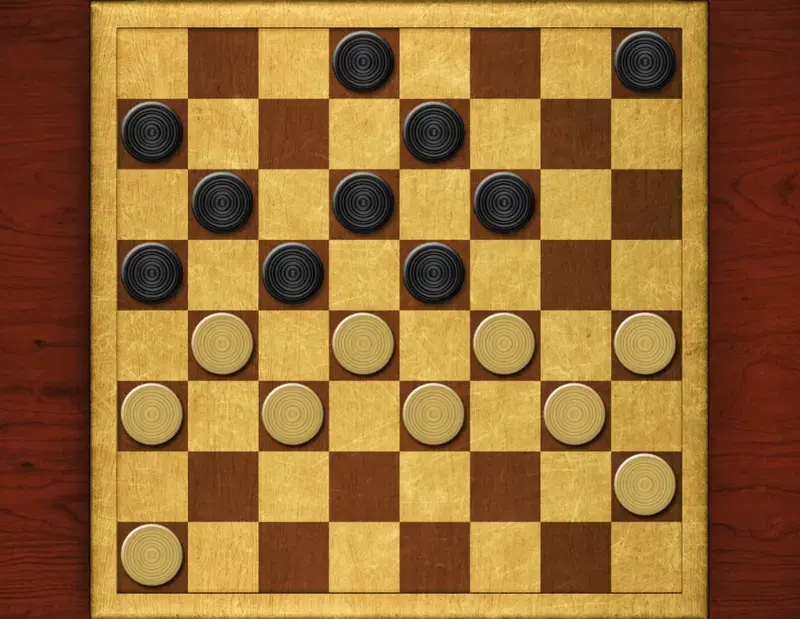Which Came First: Draughts or Checkers

For many, settling down with friends or family and a board game spread out on the table is a sure sign of a fantastic game night. It’s been like this for people for centuries– playing a board game or hand of cards has been a long-time joy for everyone, from ancient Egyptian children playing Mehen to the Nine Men’s Morris throughout Medieval Europe.
For all intents and purposes, modern checkers is no different. From the game’s earliest beginnings thousands of years ago to more modern variations like draughts and a variety of similar games from different countries, many people are familiar with these activities.
So, let’s take a closer look at the history of checkers, draughts, and the differences that exist between these two similar and popular game versions. Along with this, we'll dive into some of their most fascinating points.
Where Does Draughts Come From?
Historians have traced this particular form of checkers to an ancient game of Middle Eastern and Egyptian origins called Alquerque, with evidence of boards and game pieces unearthed by archaeologists and dated to around 1,400 B.C.E.
Alquerque itself was played with 12 black and 12 white game pieces on a board that facilitated strategic turns in which the tokens could move and jump to block in an opponent’s pieces. This mechanic is still visible in both the original French version of the game, as well as the later English draughts, including the mix of dark and light squares across the board.
Speaking of different versions, draughts exists in other countries with slightly altered rules. This includes Turkish draughts and Russian draughts– played on a traditional 8 x 8 square checkerboard– and 10 x 10 square International draughts, which people gather for in world championship competitions.
Where Does Checkers Come From?
The origin of checkers is just as interesting as draughts and actually shares some ancestry with each other.
The very first board version for those who play checkers comes from ancient Mesopotamia, found in the royal city of Ur– a location that is now modern-day Iraq– that dates back around 4.5 thousand years ago in the predynastic period. Not only was this so-called Royal Game of Ur the forefather of checkers, but it holds similarities to chess and backgammon as well.
Later, ancient Egypt’s Alquerque board also influenced our eventual version of checkers, particularly in terms of board shape, as the original Ur version featured a bridge segment between twinned square playing areas.
During the period of Greece and Rome’s dominance, legions would play a game called Ludus Latrunculorum, which had familiar checkers rules. Famous authors from that time, such as Homer and Plato, mentioned other ancient game variants in their works.
However, more alterations were implemented as variants during the 12th century and 13th century in France, when combining the Queen piece from chess with fairly aggressive token capture tactics in a game of Jeu Force– a virtual twin of modern American checkers. Historians also note modifications to the board that evolved into a similar game format called Fierges.
Alternatively, this game was referred to as Le Jeu Plaisant De Dames when the chess piece was not in use, and that version is the direct forefather of International checkers due to the number of pieces and the move restriction included.
Other Types of Checkers
While draughts does have variations based on country and region, the game of checkers has branched into many other board games and forms of entertainment, giving it a possibly wider reach since the first checkers players picked up their tokens.
This includes influences on backgammon, chessboard setups, Chinese checkers, and, most recently, the onset of checkers computer programs.
As computers continued to improve and their processors took on more power, video games started becoming popular and would change virtual board game history forever. This includes the very first AI program made for playing American checkers in 1951 by Alan Turing, showing early abilities of Artificial Intelligence even when it came to strategy.
Turing’s version would launch a wave of further checkers programs, including the first IBM checkers program in 1956, as well as a 2007 Canadian version by the University of Alberta that was considered unbeatable.
But these days, when it comes to playing checkers on devices, there are many options– so, why not load our classic Online Checkers game, sit back, and enjoy the nostalgia of a classic board game!
What Is The Difference Between Draughts and Checkers?
Ultimately, the two games are very similar. You can even argue that American checkers is virtually the same as English draughts. But there are definite differences that include the number of squares on the board, depending on your region, and the historical origins of each.
A Summary of Draughts and Checkers: Which Came First?
While both draughts and checkers share similar ancestors, the game of checkers has ultimately been traced back to the Middle East and its ancient city of Ur. These two games have interwoven and bisected throughout the years of board game history, but players worldwide can still enjoy both– particularly now that you are familiar with the fascinating history behind them.
If this article has gotten you excited about historic games that rely on strategy, why not check out our Brain Training Games Playlist and challenge yourself to some mind-bending fun!